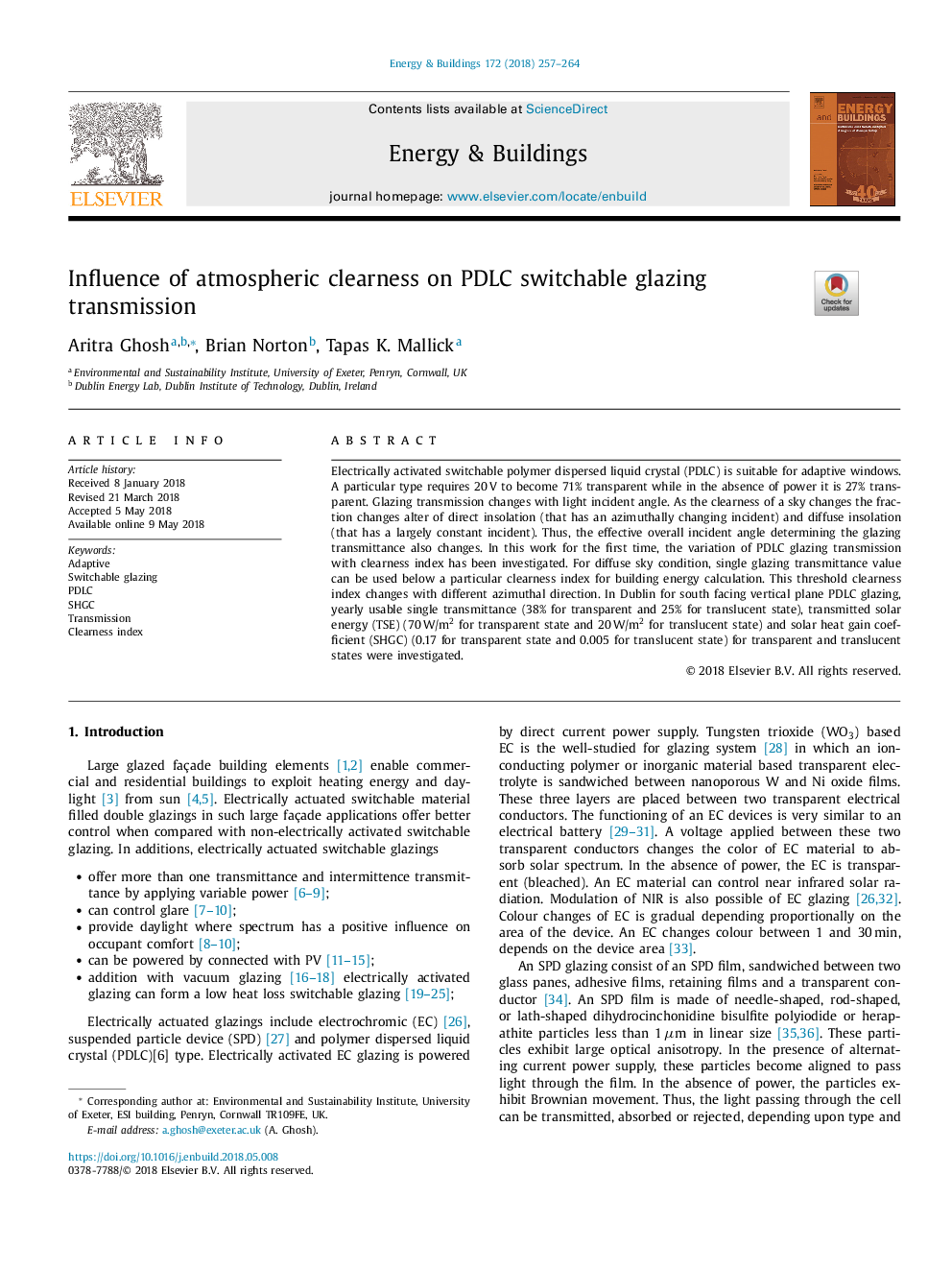| Article ID | Journal | Published Year | Pages | File Type |
|---|---|---|---|---|
| 6727538 | Energy and Buildings | 2018 | 8 Pages |
Abstract
Electrically activated switchable polymer dispersed liquid crystal (PDLC) is suitable for adaptive windows. A particular type requires 20â¯V to become 71% transparent while in the absence of power it is 27% transparent. Glazing transmission changes with light incident angle. As the clearness of a sky changes the fraction changes alter of direct insolation (that has an azimuthally changing incident) and diffuse insolation (that has a largely constant incident). Thus, the effective overall incident angle determining the glazing transmittance also changes. In this work for the first time, the variation of PDLC glazing transmission with clearness index has been investigated. For diffuse sky condition, single glazing transmittance value can be used below a particular clearness index for building energy calculation. This threshold clearness index changes with different azimuthal direction. In Dublin for south facing vertical plane PDLC glazing, yearly usable single transmittance (38% for transparent and 25% for translucent state), transmitted solar energy (TSE) (70â¯W/m2 for transparent state and 20â¯W/m2 for translucent state) and solar heat gain coefficient (SHGC) (0.17 for transparent state and 0.005 for translucent state) for transparent and translucent states were investigated.
Related Topics
Physical Sciences and Engineering
Energy
Renewable Energy, Sustainability and the Environment
Authors
Aritra Ghosh, Brian Norton, Tapas K. Mallick,
